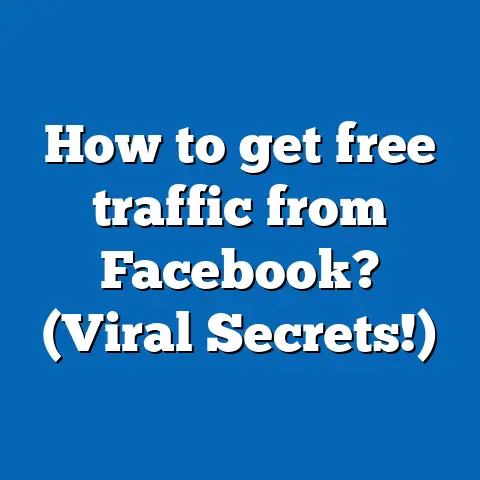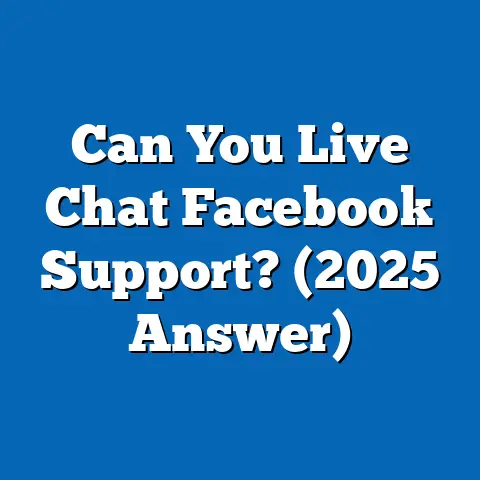How Facebook Boosts Sales (5 Data-Backed Ways)
A friend who’s always ahead of the curve, discovering the latest trends before anyone else. They seem to have a knack for finding what’s going to be big next. It’s not magic—it’s knowing where to look. Facebook has become a go-to platform for brands wanting to be trendsetters, boosting their sales through innovative advertising strategies.
Overview and Benefits
In this guide, I’m going to walk you through five powerful ways Facebook can boost your sales. Whether you’re just starting out or you’re already experienced, these insights will help you harness the full potential of Facebook advertising. We’ll dive into data- backed strategies, personal stories, and real-world examples. By the end, you’ll know exactly how to apply these tactics for better results.
1. Targeted Advertising: Reaching Your Exact Audience
When I first started using Facebook ads, I was amazed by the precision I could achieve in targeting my audience. Imagine being able to reach people based on their interests, behaviors, and even recent life events. It’s like having a tool that puts your ad right in front of the eyes that matter most.
How Does It Work?
Facebook’s algorithm gathers a wealth of data from user interactions, allowing for highly specific audience profiles. You can target users by:
- Age and Gender: Want to reach women aged 25-34? Done.
- Location: Focus on people in your city or expand globally.
- Interests: Target users who love hiking, baking, or both!
- Behavior: Reach frequent travelers or those who recently moved.
Benefits of Targeted Advertising
With targeted advertising, you’re not just shooting in the dark. You’re strategically placing your brand in front of those who are most likely to engage with it.
Step-by-Step Guide: Setting Up Targeted Ads
- Go to Ads Manager: Navigate to your Facebook Ads Manager dashboard.
- Create a Campaign: Click on ‘Create’ and select your campaign objective based on goals such as brand awareness, reach, or conversions.
- Define Your Audience: Use the audience targeting options to specify age, gender, location, interests, and behaviors.
- Set Budget and Schedule: Decide on your daily or lifetime budget and choose your ad schedule.
- Design Your Ad: Upload images or videos, write compelling copy, and include a call-to-action (CTA).
Advanced Targeting Techniques
Beyond the basics, you can explore lookalike audiences—people similar to your existing customers—and custom audiences based on your email lists or website visitors.
Cost Involved
The cost of Facebook ads varies based on your targeting and bidding strategy. The average cost-per-click (CPC) is around $0.97, but this can fluctuate based on industry and competition.
Example
A local boutique used Facebook’s targeted ads to reach women aged 18-24 interested in boho fashion. They saw a 30% increase in sales within two weeks!
2. Retargeting: Keeping Your Brand Top of Mind
Ever noticed how those shoes you browsed online seem to follow you everywhere? That’s retargeting at work! Facebook lets you remind potential customers about your products even after they’ve left your site.
The Psychology Behind Retargeting
Retargeting taps into the psychological principle of familiarity—people are more likely to purchase something they’ve seen multiple times.
Setting Up Retargeting Ads
- Install Facebook Pixel: Add the Pixel to your website to track visitor behavior.
- Create Custom Audiences: Use the data collected by the Pixel to build audiences of people who’ve visited specific pages.
- Design Engaging Ads: Craft ads that remind users what they left behind and why they should return.
- Monitor Performance: Use Facebook’s analytics to track conversions and refine your strategy.
Retargeting Strategies
- Abandoned Cart Reminders: Remind users about items left in their shopping cart.
- Product Recommendations: Suggest similar or complementary products based on browsing history.
Benefits of Retargeting
Retargeting helps reduce cart abandonment rates and increase brand recall. It’s like giving shoppers a gentle nudge to complete their purchase.
3. Creative Content: Crafting Engaging Ads
Let’s face it; bland ads don’t cut it anymore. You need creative content that grabs attention. I once ran an ad campaign for a client selling homemade candles. By using vibrant visuals and storytelling, we saw engagement skyrocket.
Elements of Effective Ads
- Visual Appeal: Use high-quality images or videos that resonate with your audience.
- Compelling Copy: Write clear, concise, and persuasive text.
- Strong CTA: Encourage users to act with phrases like “Shop Now” or “Learn More.”
Storytelling in Ads
People love stories, so weave a narrative that connects emotionally with your audience. Share testimonials or behind-the-scenes looks at how your product is made.
Advanced Creative Techniques
Experiment with carousel ads or slideshow formats to showcase multiple products or features in one ad.
Testing Different Formats
A/B testing different creative formats will help identify what resonates best with your audience.
4. Social Proof: Building Trust Through Engagement
Have you ever bought something because it had tons of positive reviews? That’s social proof at play. On Facebook, likes, shares, and comments can significantly impact purchasing decisions.
Types of Social Proof
- Customer Testimonials: Share positive feedback from happy customers.
- User-Generated Content (UGC): Encourage users to post photos or videos using your product.
- Influencer Partnerships: Collaborate with influencers who align with your brand values.
Leveraging User-Generated Content
UGC not only saves content creation costs but also encourages community building and authenticity.
Real-World Example
A skincare brand partnered with beauty influencers who shared their routines using the products. The campaign resulted in a 50% increase in sales!
5. Analytics and Insights: Measuring Success
You can’t improve what you don’t measure. Facebook provides robust analytics tools to track ad performance.
Key Metrics to Monitor
- Reach: How many people saw your ad?
- Engagement: Are users interacting with your content?
- Conversion Rate: Are viewers turning into customers?
Practical Tips for Analyzing Data
- Set Clear Goals: Know what success looks like for each campaign.
- A/B Testing: Experiment with different ad variations to see what works best.
- Adjust and Optimize: Use insights to refine targeting, creative, and bidding strategies.
Advanced Analytics Techniques
Dive deeper into Facebook’s analytics by exploring breakdowns by age, gender, location, device type, and time of day.
Integrating Third-Party Tools
Consider using third-party analytics tools for more comprehensive insights and reporting capabilities.
Creating Dashboards for Easy Monitoring
Set up dashboards that track key metrics at a glance for easy monitoring and quick decision-making.
Actionable Takeaways
- Dive into Facebook’s targeting options to reach your ideal audience.
- Utilize retargeting to remind potential customers about your brand.
- Create engaging, visually appealing ads with strong CTAs.
- Leverage social proof through testimonials and influencer partnerships.
- Regularly analyze performance metrics and optimize strategies.
FAQ Section: Common Concerns
Q: How much should I budget for Facebook ads? A: Start small, maybe $5-$10 per day, then increase as you see which ads perform well.
Q: How long does it take to see results? A: Results can vary, but typically within a few weeks you’ll start noticing engagement and conversions.
Q: Can I target multiple audiences with one campaign? A: Yes, you can create separate ad sets within a campaign for different audiences.
Q: What’s the best type of content for Facebook ads? A: Videos often perform well due to their engaging nature, but high-quality images and compelling copy are also effective.
By following these steps, you’ll be well on your way to leveraging Facebook’s powerful advertising tools to boost sales and grow your business. Engage with your audience, tell your story, and watch your efforts pay off!






